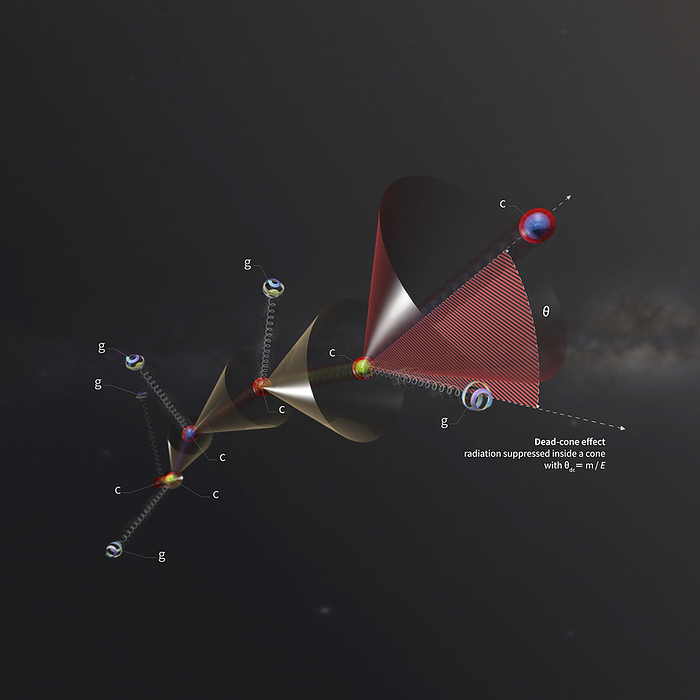
RM
Dead cone effect, ALICE detector
Graphic of the dead cone effect detected at CERN (European Particle Physics Laboratory) by ALICE (A Large Ion Collider Experiment). The effect occurs when a charm quark (c) in a parton shower loses energy by emitting radiation in the form of gluons (g). For angles smaller than the ratio of the quark's mass (m) and energy (E), the shower displays a 'dead cone' of suppressed radiation around the quark. As the parton shower proceeds, gluons are emitted at smaller angles and the energy of the quark decreases, resulting in larger dead cones of suppressed gluon emission. Quantum chromodynamics predicted the dead cone effect in the 1990s as part of the strong force theory. This result directly confirms this feature of the theory and also exposes the mass of the charm quark., by Daniel Dominguez/CERN/SCIENCE PHOTO LIBRARY

More
Top Categories
